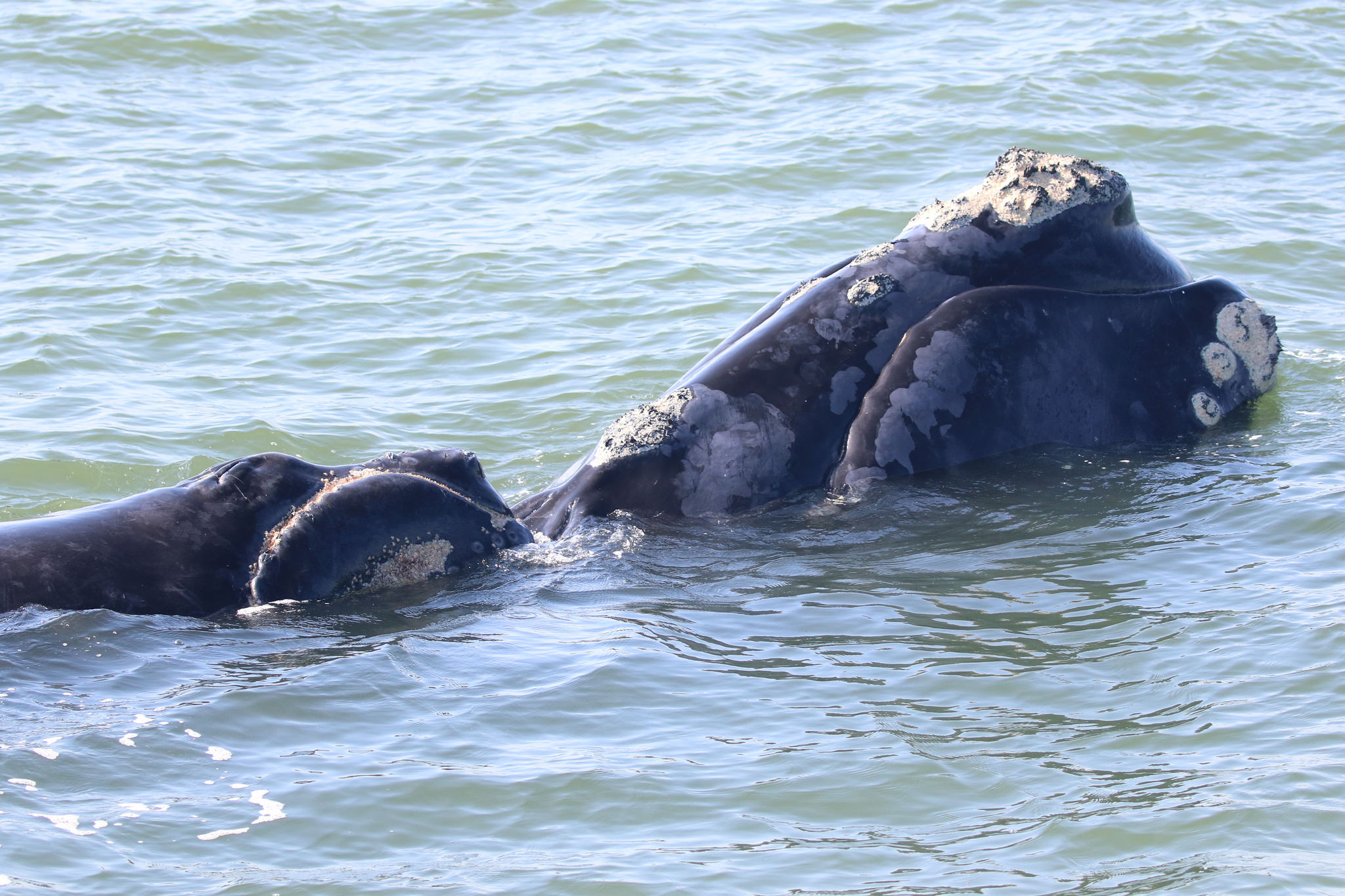

Protecting Adult Females Key to Population Growth
November 19, 2018

Tripelago (#2614), a 21 year old North Atlantic right whale, with her 4th calf off the coast of Fernandina Beach, Florida on February 2, 2017. Her calf was one of only five that were born in 2017.
credit: Georgia DNR under NOAA permit #15488-02
A new report has been released by the Northeast Fisheries Science Center stating that protecting adult females is the most important thing to do for the survival of North Atlantic right whales. This is already well known as we know that there are most likely less than 100 females of breeding age in the population of only around 408 and they have not only struggled to reproduce, they have struggled to survive. Still, it is good that this new report can be referenced when making decisions regarding North Atlantic right whales and that it further underscores the need to protect these whales.
The report compared the situation of North Atlantic right whales to Southern right whales and stated, "From 1970 to 2009, 80 percent of all North Atlantic right whale deaths (70 of 87) for which the cause is known were human-induced, mainly from entanglement in fishing gear and collisions with ships. By comparison, most deaths of southern right whales that have been observed were calves in their first year of life and very few were directly attributable to human activities." It's also known that 83% of North Atlantic right whales have been entangled at least once in their lives. The report acknowledged this and stated, "The energy demands from the drag associated with entanglement can reduce the likelihood that a female can successfully reproduce. Years between births also increases for females given the recovery period needed from the physical costs of entanglements, which can last from months to years."
Sources:
Protecting adult female north atlantic right whales from injury and death key to recovery - NEFSC